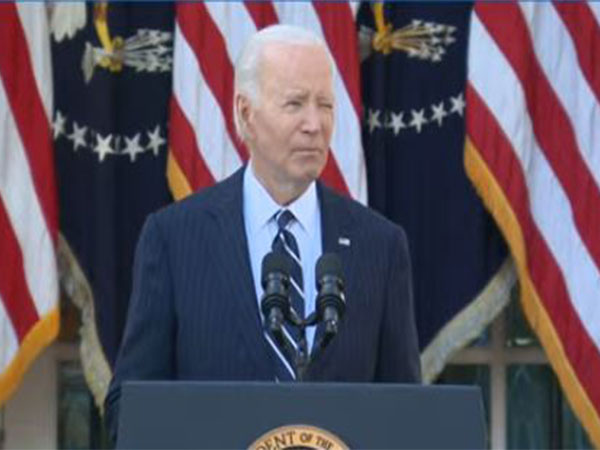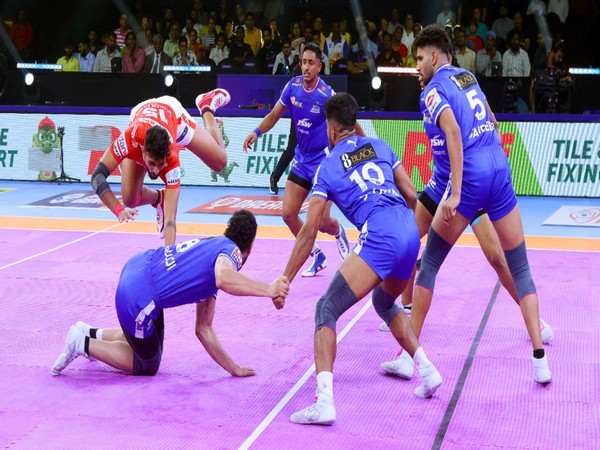New Delhi [India], August 18 (ANI): After the Union Public Service Commission notification for lateral entry posts ignited criticism from the opposition, sources said on Sunday that the concept of lateral entry was first introduced under the Congress-led UPA government, and was strongly endorsed by the Second Administrative Reforms Commission (ARC), established in 2005 and chaired by Veerappa Moily.
The UPSC recently announced a notification for recruiting Joint Secretaries, Directors, and Deputy Secretaries through lateral entry. This decision has ignited criticism from opposition parties, who claim it undermines the reservation rights of OBCs, SCs, and STs.
Leader of Opposition Rahul Gandhi expressed concerns over the lateral entry of individuals into top government positions on Sunday, alleging that Prime Minister Narendra Modi is appointing public servants through the Rashtriya Swayamsevak Sangh (RSS) rather than following the traditional Union Public Service Commission (UPSC) route.
As per the sources, the Administrative Reforms Commission was tasked with recommending reforms to make the Indian administrative system more effective, transparent, and citizen-friendly.
The Second ARC, chaired by Veerappa Moily, was established to recommend reforms to enhance the effectiveness, transparency, and citizen-friendliness of the Indian administrative system. In its 10th Report titled “Refurbishing of Personnel Administration – Scaling New Heights,” the Commission emphasised the need for reforms in personnel management within the civil services. One of its key recommendations was to introduce lateral entry into higher government positions requiring specialized knowledge and skills.
Sources said today that the ARC identified that certain government roles require specialized knowledge not always available within the traditional civil services. It recommended recruiting professionals from the private sector, academia, and public sector undertakings to fill these gaps.
“The ARC proposed the creation of a talent pool of professionals who could be inducted into the government on a short-term or contractual basis, bringing fresh perspectives and cutting-edge expertise in areas such as economics, finance, technology, and public policy,” sources added.
The Commission emphasized the importance of a transparent and merit-based selection process for lateral entrants, suggesting the establishment of a dedicated agency to oversee their recruitment and management.
“The ARC recommended a robust performance management system to hold lateral entrants accountable for their work and regularly assess their contributions,” sources said.
The ARC stressed the importance of integrating lateral entrants into the existing civil services in a manner that maintains the integrity and ethos of the civil service while leveraging the specialized skills they bring.
As per the sources, the First ARC, established in 1966 under the chairmanship of Morarji Desai (later succeeded by K. Hanumanthaiah), laid the groundwork for future discussions on the need for specialized skills within civil services.
While it did not specifically advocate for lateral entry as understood today, it emphasized professionalization, training, and personnel management reforms to ensure the bureaucracy could effectively meet the challenges of a rapidly changing nation.
The Government of India has historically inducted outside talent into higher tiers of government, typically in advisory roles but occasionally even in key administrative assignments.
For instance, the Chief Economic Advisor is traditionally a lateral entrant who, according to the rules, must be below 45 years of age and is invariably an eminent economist. Additionally, several other distinguished individuals have been appointed at the highest levels as Secretaries to the Government.
Sources also mentioned that the lateral entry scheme was formally introduced during Prime Minister Narendra Modi’s tenure, driven by the recognition of the need for domain experts to enhance the efficiency and responsiveness of India’s administrative machinery.
“In 2018, the government took a significant step by announcing vacancies for senior positions such as Joint Secretaries and Directors, marking the first time that professionals from both the private and public sectors were invited to apply for these high-level roles. The selection process was rigorous, emphasizing candidates’ qualifications, experience, and suitability for these strategic positions,” they said.
This initiative was not without precedent; it was deeply influenced by the recommendations of the Second Administrative Reforms Commission (ARC), which had earlier laid the conceptual groundwork for lateral entry.
The ARC emphasized the importance of bringing external expertise into the civil services to make the administration more dynamic and responsive to the complexities of modern governance.
The recruitment of Joint Secretaries in 2018 effectively operationalized the ARC’s vision, demonstrating a commitment to integrating specialized skills from outside the traditional civil service framework. These reforms have continued to influence ongoing discussions about how best to modernize India’s public administration, ensuring it meets the evolving demands of governance in the 21st century. (ANI)
Disclaimer: This story is auto-generated from a syndicated feed of ANI; only the image & headline may have been reworked by News Services Division of World News Network Inc Ltd and Palghar News and Pune News and World News
HINDI, MARATHI, GUJARATI, TAMIL, TELUGU, BENGALI, KANNADA, ORIYA, PUNJABI, URDU, MALAYALAM
For more details and packages
















